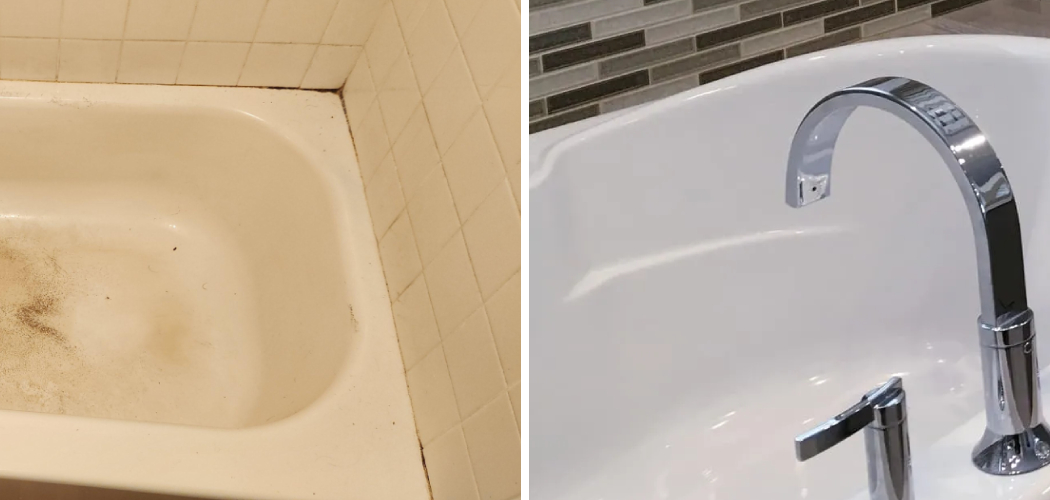Sewer backups in the bathtub can be a frustrating and unsanitary problem for homeowners. This issue often arises due to blockages in the plumbing system, which can be caused by a buildup of debris, tree roots, or damaged sewer lines.
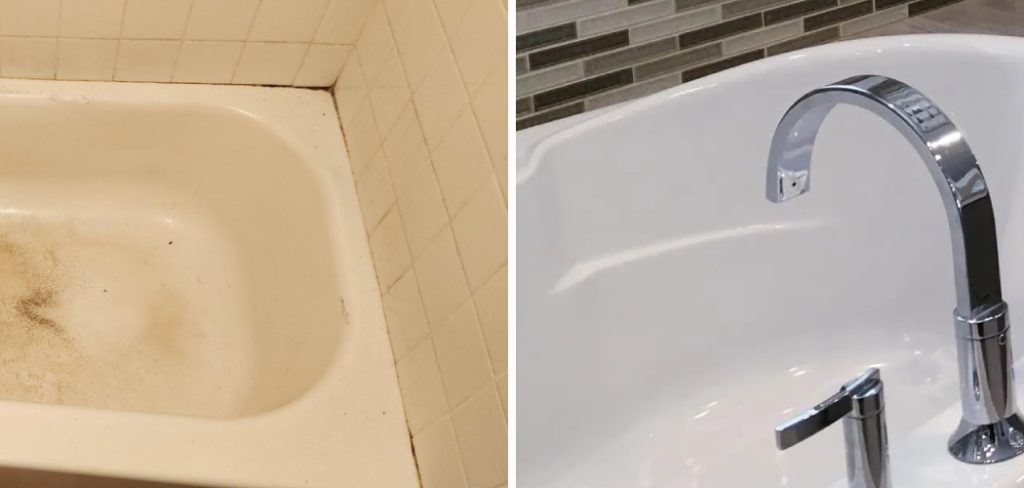
Not only can backups result in unpleasant odors, but they can also lead to water damage and possible health hazards if left unaddressed. Understanding the causes and solutions for sewer backups is crucial in effectively managing and preventing this vexing problem from disrupting your household.
In this guide on how do you get rid of sewer backup in bathtub, we will explore various strategies and tips to help you tackle sewer backups efficiently and restore your plumbing system to optimal function.
What is a Sewer Backup?
A sewer backup occurs when wastewater or sewage from the main sewer line backs up into your bathtub or other plumbing fixtures in your home. This is often accompanied by foul odors, gurgling sounds, and slow draining water.
But what causes these backups to happen? The main culprit is typically a blockage in the sewer line, which can occur due to various reasons such as:
- The buildup of debris and grease in the pipes
- Tree roots invading and clogging the sewer lines
- Damaged or collapsed sewer pipes
- Improperly flushed items like wipes, paper towels, or feminine products
Needed Materials
To effectively get rid of sewer backup in your bathtub, you will need the following materials:
Plunger:
A basic plunger is an essential tool for clearing clogs in bathtubs and other fixtures. Make sure to have a plunger with a flat rim to create a tight seal around the drain.
Baking Soda and Vinegar:
These common household items are highly effective in breaking down blockages and eliminating odors. You will need about 1/2 cup of baking soda and 1 cup of vinegar.
Snake or Auger:
For more stubborn clogs, you may need to use a snake or auger to manually remove debris from the pipes. These tools can be purchased at most hardware stores.
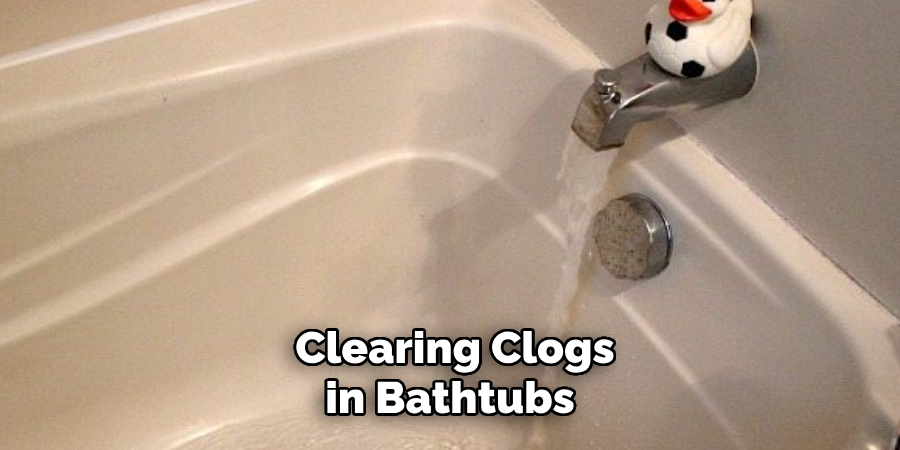
8 Steps on How Do You Get Rid of Sewer Backup in Bathtub
Step 1: Protect Yourself
Before attempting to address a sewer backup in your bathtub, it’s important to prioritize safety. Begin by putting on protective gear to shield yourself from potential health hazards and unsanitary conditions. This includes wearing rubber gloves to avoid direct contact with contaminated water and goggles to keep your eyes safe from splashes. Also, consider wearing a mask to prevent inhaling any unpleasant or hazardous odors.
Ensuring proper ventilation in the bathroom by opening windows or using a fan can further reduce the risk of inhalation exposure. By taking these precautions, you’ll be better prepared to handle the sewer backup situation safely and effectively.
Step 2: Clear the Drain Opening
Once you are properly protected, the next step in tackling a sewer backup in your bathtub is to clear the drain opening of any visible debris. Start by removing any hair, dirt, or soap scum that may have accumulated around the drain cover. You can use a pair of pliers or tweezers for this task if necessary. Once the surface debris is cleared, consider removing the drain cover itself to gain better access to the drain.
This will allow you to visually inspect the immediate area for any other obstructions that may be causing the backup. Clearing the drain opening ensures that subsequent steps, such as plunging or using a snake, can be carried out more effectively, paving the way for a more thorough address of the issue.
Step 3: Plunge the Drain
After clearing the drain opening, your next course of action is to use a plunger to try and dislodge any blockages in the pipes. Fill the bathtub with enough water to cover the rubber lip of the plunger, then place it over the drain. Push down firmly and repeatedly for about 30 seconds, creating a suction that can help break up clogs and move them further down the pipes.
If you have an overflow opening in your bathtub, make sure to plug it before plunging as this will prevent air from escaping and create more pressure within the pipes for a more effective plunge. After plunging several times, remove the plunger and check if the water is draining more smoothly. If not, move on to the next step.
Step 4: Use Baking Soda and Vinegar
When plunging fails to clear the clog, you can try using a combination of baking soda and vinegar as a natural alternative to harsh chemical drain cleaners. Start by pouring half a cup of baking soda down the drain, followed by one cup of vinegar. The reaction between these two ingredients creates a foaming action that can help break up blockages and eliminate odors in pipes.
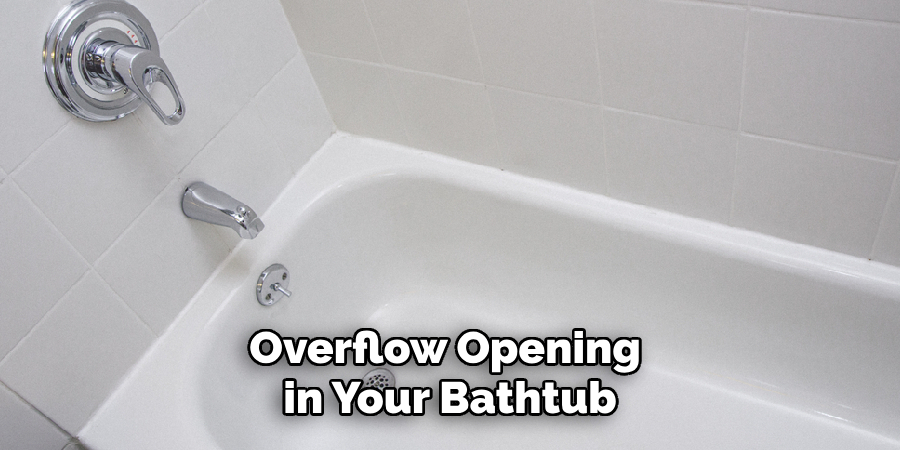
Cover the drain with an old towel or cloth to prevent any splashing and leave for about 30 minutes before flushing with hot water. This method may need to be repeated a few times for more stubborn clogs.
Step 5: Use a Snake or Auger
If both plunging and the baking soda-vinegar combination fail to clear the sewer backup, it’s time to bring out the big guns – a snake or auger. These tools are designed to reach deeper into the pipes and manually remove any blockages that cannot be loosened by plunging or chemical reactions. Follow the manufacturer’s instructions carefully when using these tools, as they can cause damage if not used correctly.
The process may require some trial and error, but eventually, the snake or auger should be able to break up and remove the clog.
Step 6: Clean Up
After successfully clearing the sewer backup from your bathtub, don’t forget to clean up thoroughly. Any residue left behind can lead to unpleasant odors and potential health hazards. Use a disinfectant cleaner to wipe down all surfaces that have come in contact with the contaminated water, including the bathtub itself. Dispose of any used materials like gloves, towels, or rags in a sealed plastic bag to prevent contamination.
It’s also a good idea to run hot water through the drain for a few minutes to flush out any remaining debris.
Step 7: Prevent Future Sewer Backups
Now that you’ve dealt with the immediate issue at hand, it’s essential to take steps to prevent future sewer backups in your bathtub. Avoid flushing or pouring any items down the drain that could potentially cause clogs, like wipes or grease. Consider installing a drain cover to catch hair and other debris before they can enter the pipes.
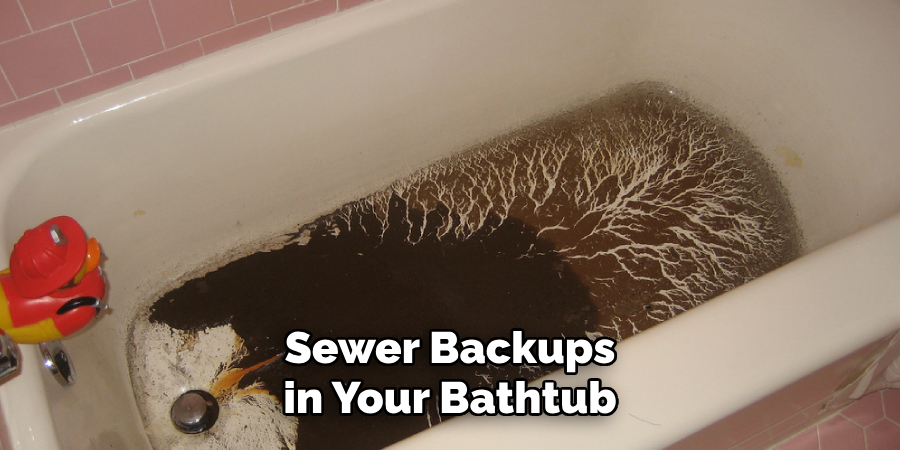
Additionally, regular maintenance of your plumbing system can help prevent unexpected backups and keep everything flowing smoothly.
Step 8: Call a Professional
If all else fails, or if you are uncomfortable handling the situation on your own, don’t hesitate to call a professional plumber for assistance. They have the tools and expertise needed to handle even the most stubborn sewer backups safely and effectively. Plus, they can offer advice on how to prevent similar situations in the future.
By following these eight steps on how do you get rid of sewer backup in bathtub, you’ll be able to effectively get rid of a sewer backup in your bathtub and restore proper drainage. Remember to prioritize safety, use the right tools and techniques, and take preventive measures to avoid future backups. So, even if you encounter this issue again, you’ll know exactly what to do! Happy plumbing!
Additional Tips for Preventing Sewer Backups
- Regularly clean out drains and sewer lines to prevent the buildup of debris.
- Avoid using harsh chemical drain cleaners, as they can cause damage to pipes and harm the environment.
- Be mindful of what you flush or pour down your drains. Dispose of items like grease, wipes, and feminine products in the trash instead.
- Consider installing a backwater valve to prevent sewage backup from entering your home.
By taking these precautions, you can reduce the likelihood of encountering a sewer backup in your bathtub and keep your plumbing system running smoothly. Remember, if all else fails, don’t hesitate to call a professional for assistance. Stay safe and happy plumbing!
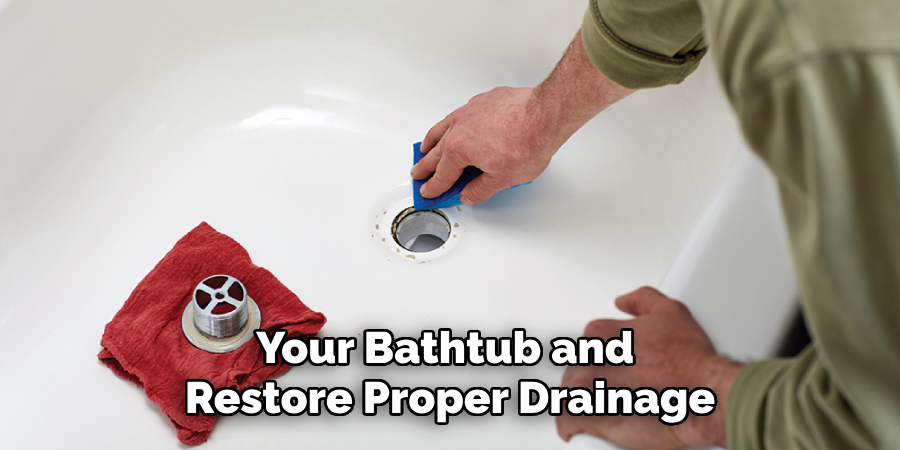
Conclusion
In conclusion, dealing with a sewer backup in your bathtub can be a daunting task, but by following the outlined steps on how do you get rid of sewer backup in bathtub, you can effectively manage and resolve the issue. It’s crucial to start with simple methods such as clearing the drain and using a plunger, and then move on to more advanced techniques like using a snake or auger if needed. Remember that safety is of utmost importance, so always handle tools and materials with care.
Furthermore, regular maintenance and preventive measures can greatly minimize the chance of future backups, ensuring your plumbing system remains in good working order. Finally, don’t hesitate to seek professional help if the problem persists or if you are unsure about any step in the process. With these strategies in mind, you’ll be better prepared to tackle any plumbing challenges that come your way. Happy plumbing!

